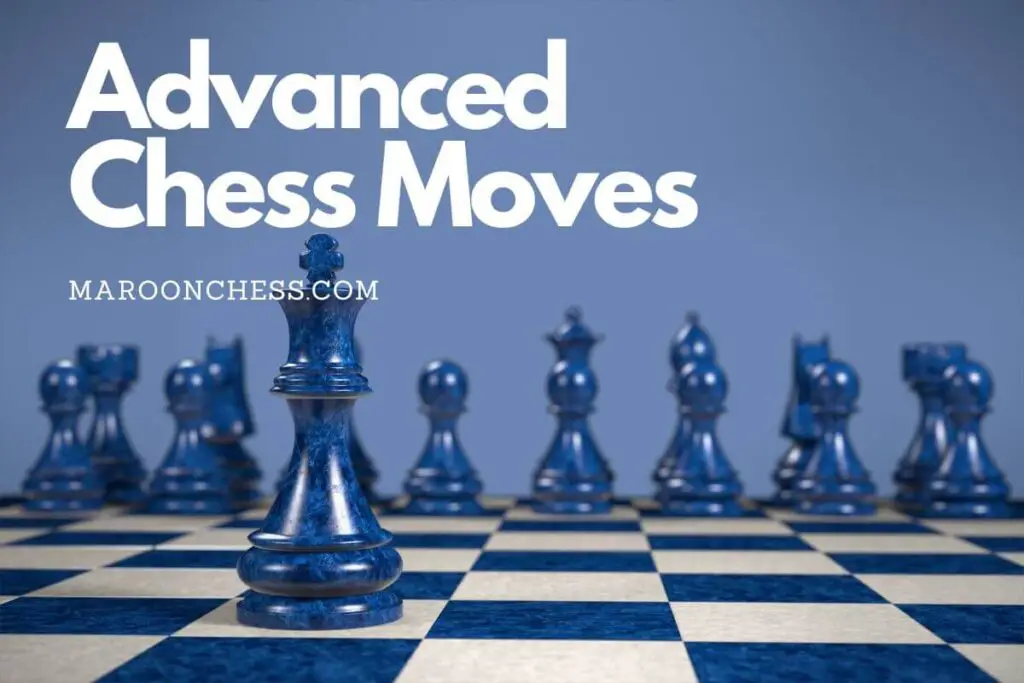Understanding the basic principles of chess is crucial for players of all levels. However, as you improve in strength and rating you will need to add upon your basic knowledge of chess.
Developing your pieces, castling your king, playing in the center are some of the basic moves you will hear when starting out. While these principles are the core and foundation to playing good chess, you still need to learn a few advanced moves if you want to have an edge over your opponent.
In this article, we will discuss 5 advanced chess moves that will help sharpen your skills and to defeat stronger opponents. With that said, let’s jump right in.
Here are 5 advanced chess moves you need to know:
- The Greek Gift Sacrifice
- The Minority Attack
- Triangulation
- Positional Sacrifice
- Underpromotion
Top 5 Advanced Chess Moves
1. The Greek Gift Sacrifice
The greek gift sacrifice is a combination of moves against the opposing king which involves sacrificing your bishop on h7 if you are white (or h2 if you are black).
The reason why the greek gift sacrifice is such an advanced move is because it sets up a devastating attack against the king, which in most cases lead to checkmate if the opposing player doesn’t defend properly.
Other pieces involved in the greek sacrifice are your queen and knight which works harmoniously together during the attack. Generally, it would be bad for the player to accept this bishop sacrifice, but if done untimely under the wrong conditions, it could backfire on the attacking player. Therefore, it’s important to know the right moment to execute this sequence of moves.
Let’s look at an example.
In the following position of the French defense, white can perform the greek gift sacrifice by capturing the pawn on h7 with his light squared bishop. The black king has two options: either to capture the bishop or sidestep the king to h8.
The greek gift sacrifice often comes at a surprise given that the position appears to be calm and subtle.
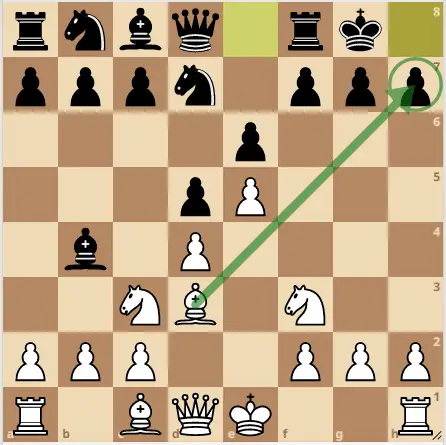
Option 1: Black King Captures The Bishop
If the black king captures the bishop and accepts the “gift”, white will follow up with the move knight to g5.
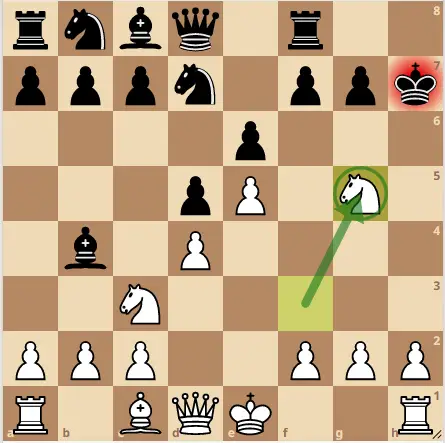
The knight on g5 is attacking the king on h7 and more importantly opening up a diagonal path for the queen (d1-h5 diagonal). The queen will use this diagonal to deliver check to the king. The queen will also work harmoniously with the knight to potentially deliver a checkmate on h7.
It’s important to note that the knight on g5 is being defended by the bishop on c1. This is a condition that you need to bear in mind if you ever plan on performing the greek gift sacrifice. Without this bishop, the attack will not work as the knight would be captured by the black queen on d8.
If Black now goes ahead and play Kg8, white will respond with Qh5 which threatens mate on the next move.
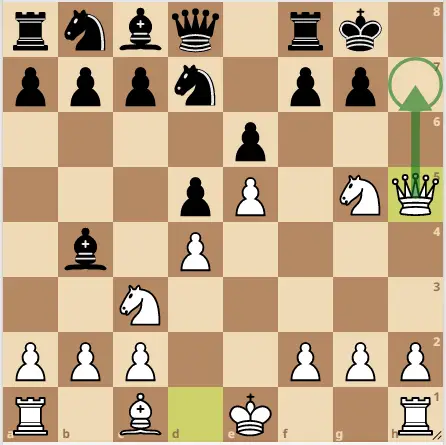
Here, black typically responds with Re8, giving the king an escape square. However, that same black rook which was protecting the f7 square has now left the defense. Now, the white queen can deliver a check on f7.

In fact, white has a forced checkmate in 5 moves 1.Qxf7+ Kh8 2.Qh5+ Kg8 3.Qh7+ Kf8 4.Qh8+ Ke7 5.Qxg7# checkmate
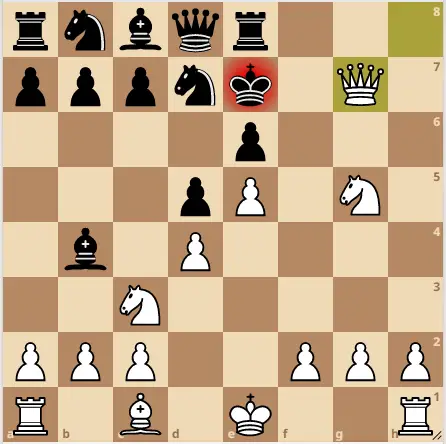
Therefore, accepting the sacrifice is bad as black would have to give up his queen for the white knight or get checkmated as shown in the example above.
Option 2: Black Declines The ‘Gift’
The other option for black is to play King to h8 and decline the gift. If black declines, white will still follow up with the move knight to g5.
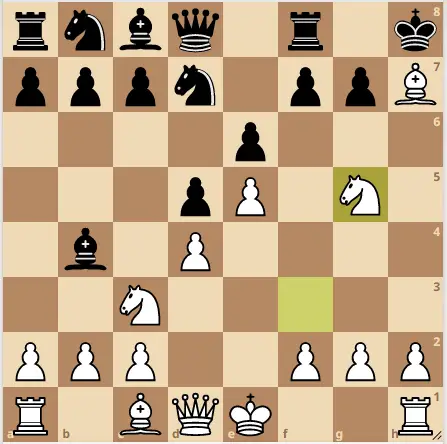
Although black is not under immediate threat, he still has to worry about the white queen coming to h5. Black can prevent this by playing the move pawn to g6 which seems to be the best defense for black.
Nonetheless, white can continue adding pressure to black’s kingside by playing the move queen to g4, with ideas of shifting the queen to the h-file which can lead to all sorts of nasty discoveries against the black king.
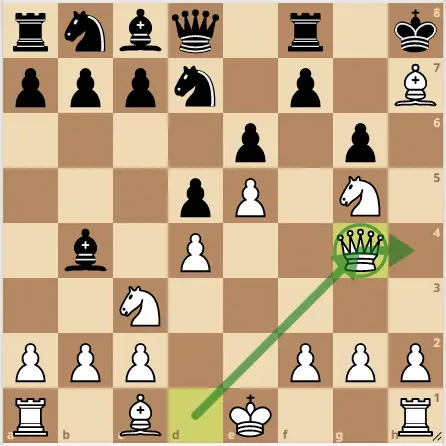
Another alternative for white is to play pawn to h4. White wants to open up the h-file for his rook to join in the attack. This is perhaps more devastating.

2. The Minority Attack
A minority attack is a common strategy in the queens gambit opening where white advances his queenside pawns with the hope of ruining black’s pawn structure. These weak pawns can then become targets of attack.
The following position shows the pawn structure to which a minority attack can be applied. White will advance his a and b pawns up the board to create long term weaknesses in black’s camp.
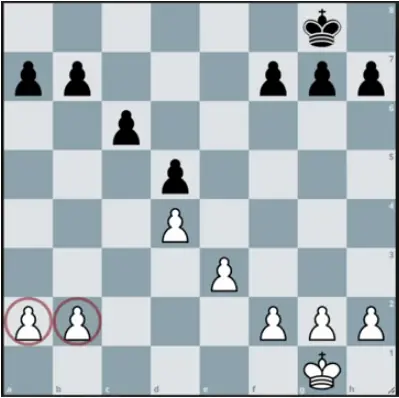
For now, black has a solid pawn struture and there are no major weaknesses. However, white can push his queenside pawns forward and exhange on c6 to create what is known as a backward pawn.
White attacks black’s pawn chain
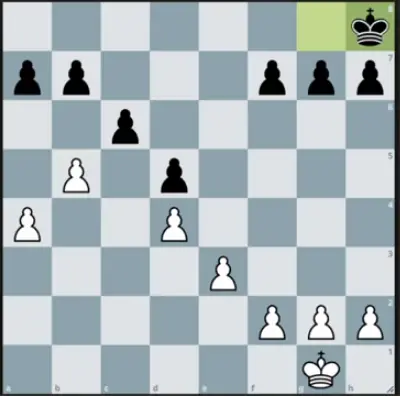
White exhanges on c6 and creates a backward pawn on a half open c-file. White can use his rooks to mount pressure on the pawn.

Let’s look a real game where this concept is applied:
In the following position, white just played the move pawn to b4 with the intention of starting a minority attack on the queenside.
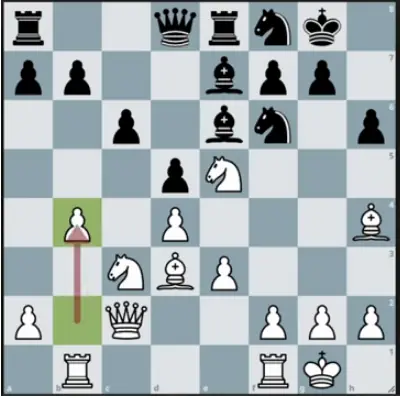
White successfully made contact with black’s queens side pawn with the move b5. Black can choose to capture on b5, but this will create isolated pawns for him.
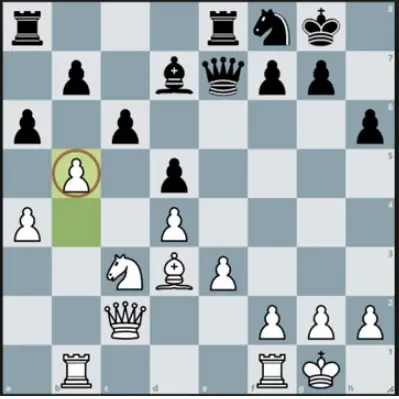
If black ignores this, white will still carry out his plan anyway of exchanging on c6 and creating a backward pawn for black.

White can play moves like Na4 to seize control of the c5 square and stop the backward pawn from moving. White will pile up pressure along the c-file using his heavy pieces. Black will have a hard time defending the pawn.
3. Triangulation
Triangulation is an advanced endgame strategy that is performed by the king. The king moves in a triangle in order to “pass the turn” to their opponent. When this happens, their opponent is left in a zugzwang (every move is a bad move). This allows your king to take control of key squares in the position which often leads to pawn promotion or gain in material.
In the following position (with white to move), white wants to promote his c pawn. But it appears the game is drawn after 1.Kd6 Kd8 2.c7+ Kc8 3.Kc6 stalemate.
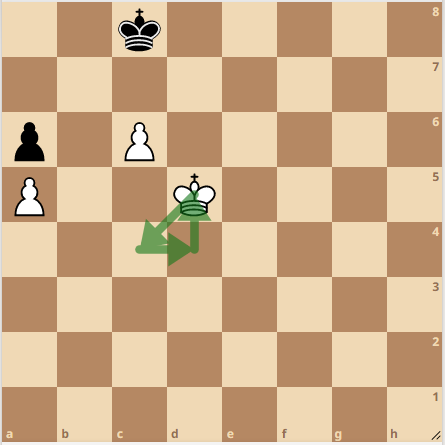
Another attempt is 1.Kc5, with the hope of getting the white king around to the b6 square. Unfortunately, black has Kc7 and it appears there is nothing white can do.
However, with closer inspection, white can execute the triangulation strategy by moving his king to c4 to d4 and back to d5 as shown by the green arrows.
We reach the same initial position, but this time it is black to move. See the full game below
All in all, the general idea of triangulation is to achieve the same position but with your opponent to move. This means you should lose a tempo by walking the king in a triangle shape using three squares.
While this may seem a bit complicated at first glance, it actually becomes a lot easier once you practice with a few examples.
4. Positional Sacrifice
A positional sacrifice is a long term strategic idea where one player gives up a piece of higher value for their opponent’s piece of lower value in order to achieve a positional advantage (long term compensation). Positional advantage could include an increase in activity of your pieces or a decrease in activity of your opponent’s pieces.
Positional sacrifice can also create long term weaknesses for your opponent’s king as it relates to its safety. Positional sacrifice requires deep insight which is why it is one of the most advanced chess moves.
It has nothing to do with ‘calculation’ or ‘winning back material’ as it should not be seen as a tactical combination. Rather, it should be viewed as long term strategic play. Your positional understanding must be sound if you seek to carry out this sacrifice.
Our example features a popular game between former world champion Garry Kasparov and Deep blue in 1996. The computer made a positional sacrifice with his knight in the Caro-kann defense.
White sacrifices his knight on e6 to create long term weak squares around black’s king.
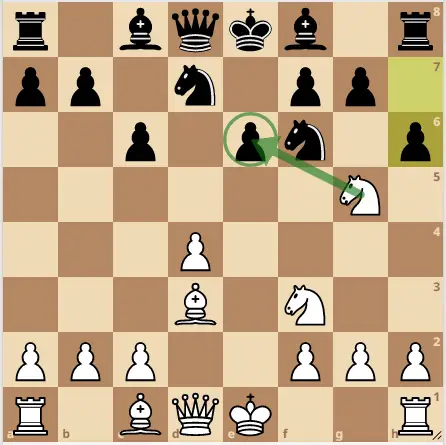
At first glance, it seems stupid giving up your knight for a pawn. But with closer inspection, white was able to create major weaknesses on the kingside and restrict the activity of black’s pieces like the bishop on f8. In the game, Garry Kasparov had a miserable time playing as he struggled to coordinate his pieces, which was as a result of white’s positional sacrifice. Deep blue eventually won the game as black threw in the towel on move 19.
When to perform a positional sacrifice?
- Create weaknesses around your opponent’s king
- Increase the activity of your pieces
- Hinder the development of your opponent’s pieces
- Gain a psychological advantage over your opponent
5. Underpromotion
The last advanced chess move on our list is underpromotion. In most cases, the player who gets his pawn to the last rank usually promotes it to a queen. Promoting your pawn to a queen often gives you enough force to checkmate the opposing king.
However, there are a few scenarios where it is best to underpromote your pawn into a knight, rook or bishop. For example:
- To prevent stalemate from occuring
- Carry out a tactical combination which leads to checkmate or gain material
Let’s look at an example:
In the following position, it would be a waste for white to promote his pawn to a queen as that would end the game in stalemate. With closer inspection, white can actually checkmate the black king in one move by underpromoting the pawn to a knight as shown by the arrow.
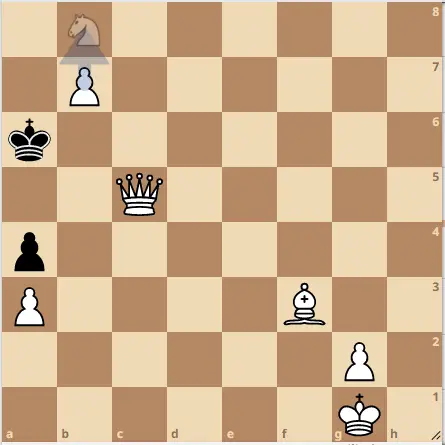
Underpromotion is a rare move but it is good to keep at the back of your mind as you could experience these types of stalemate positions.
Final Verdict
In reality, most of these ‘advanced moves’ will not occur in your games such as underpromoting to a knight or even the ‘complicated’ triangulation technique.
What’s most important is learning the fundamental principles of chess. You can beat strong opponents by just following the basic principles of chess and not worrying about advanced strategies. In fact, many chess players lose their games because they simply don’t follow the basic principles.
If you wish to sharpen up your knowledge on the fundamental principles and positional play, be sure to check out these articles:
Top 10 Positional Chess Concepts
Best Chess Middlegame Strategy
Good luck in your games 🙂

